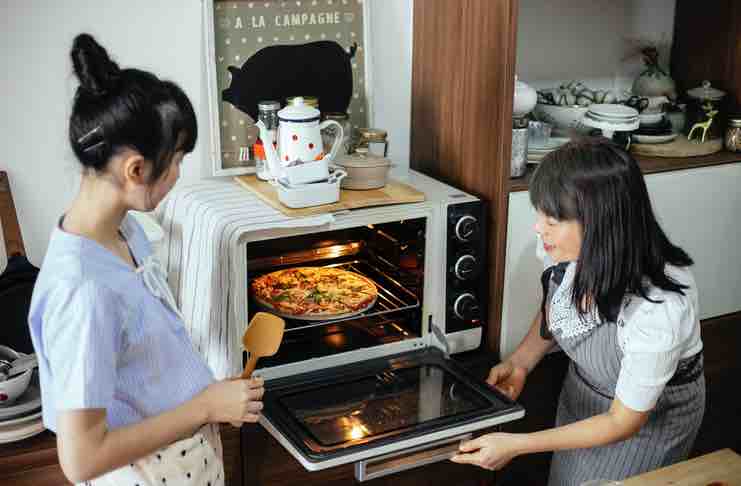Cannabis has been associated with food for a long time. Until recently, however, that association was limited to marijuana edibles (brownies, cookies, etc.). That, needless to say, isn’t everyone’s cup of tea. Fortunately, there are new ways of introducing cannabis—or at least its constituents—to your diet that are a little more, shall we say, palatable. In this post, we’ll discuss the common mistakes when cooking with Hemp or CBD oil.
Take CBD, for instance. One of the main constituents of marijuana, CBD is known for its impressive range of therapeutic properties, as well as its lack of significant side effects. Available in the form of oils, capsules, foods, drinks and bath bombs, to name a few, CBD is one of the hottest commodities on the market today. You can even buy CBD-infused food for your dog or cat.
Many people are beginning to experiment with CBD in the kitchen, which is what we’ll be discussing in this post. Cooking with CBD oil is yet another way of deriving the several therapeutic benefits it has to offer; moreover, it opens the door to greater creativity, enabling you to put an original spin on your favorite recipes.
With that said, there are some common mistakes you’ll want to avoid when cooking with Hemp or CBD oil for the first time. We get into that and more below.
What is CBD anyway?
CBD (short for cannabidiol) is one of more than 100 chemical compounds called cannabinoids found in the cannabis plant. Of all these cannabinoids, two are dominant. One is CBD. The other is tetrahydrocannabinol, also known as THC. As you probably know, THC is the psychoactive cannabis ingredient that makes people “stoned.” Thus, it’s the reason why marijuana is classified as a Schedule 1 drug by the US government.
Unlike THC, CBD does not get you high. Instead, it actually works to mitigate the effects of THC, rendering the marijuana plant safer and more tolerable. That is what’s known as the “entourage effect.” Terpenes also play a role here, for instance, those found in the strawberry cough strain. You can read and learn more about adding Terpenes to your CBD edible here on finestlabs.com.
What are the effects of CBD?
As a growing body of scientific research demonstrates, CBD has a number of important health benefits. Among other things, it can assist in the treatment of common ailments such as anxiety, depression, insomnia, pain, and inflammation. It is also effective in alleviating symptoms of seizure disorders.
While CBD is usually described as non-psychoactive, that’s not exactly accurate. It’s true, as we mentioned above, that CBD does not have intoxicating effects, but it’s still technically psychoactive in that it directly affects the levels of certain chemicals in our brains.
Specifically, CBD nurtures a chemical that influences things like pain, mood, and sleep patterns. It does so by binding to the receptors in our endocannabinoid systems, activating them, and setting a complex physiological process in motion.
CBD is regarded as safe and well-tolerated. Hence, it was legalized at the federal level in 2018. Side effects include fatigue, diarrhea, low blood pressure, and changes in appetite.
Common Mistakes to Avoid When Cooking with Hemp or CBD oil
The CBD oil used for cooking is usually derived from hemp. A variety of the Cannabis sativa plant, hemp differs from marijuana in that it contains only trace amounts of THC (0.3% or less). As a result, hemp oil and its derivative products—even if they’re “full-spectrum”—don’t cause intoxication.
Here are some common mistakes to avoid when using CBD in your kitchen:
Buying an inferior product
This is first and foremost. When shopping around for CBD oil, it’s necessary to do a little bit of homework. Buy only from trustworthy brands that have a lot of positive customer reviews. There are plenty of impostors out there peddling junk CBD products.
A good rule of thumb: quality CBD products are tested by independent third-party labs; most companies will make the details available in the product’s QR code, as well as on their websites. If a company won’t provide any information about testing, keep shopping until you find one that will.
Using too much CBD
In the context of cooking with CBD oil, less is more. It’s easy to go overboard when you first start out, and the result can be unpleasant. Until you really get the hang of how CBD affects the dish you’re adding it to, err on the side of too little.
Adding it to the wrong foods
Needless to say, CBD oil works better in some recipes than it does in others. It’s easy enough to judge: if the recipe calls for oil or butter, for example, CBD oil will blend right in. On the other hand, it probably won’t mix so well with a baked potato. Also, refrain from adding CBD to foods or drinks with high acidity, as they will cause the CBD to break down.
Overheating the CBD oil
Be gentle when heating the oil. Heating it too much or for too long can cause the CBD—and many of its benefits—to evaporate. CBD’s boiling point is between 320 and 350 degrees Fahrenheit.
By taking care to avoid these common missteps, you’ll have a more efficient and enjoyable culinary experience. Better yet, your food will be enhanced by the many beneficial properties of CBD.
Looking for more CBD-related posts? Check out our post about the trend of CBD Bakeries.
Fallon Chan is a food and lifestyle photographer and blogger.
